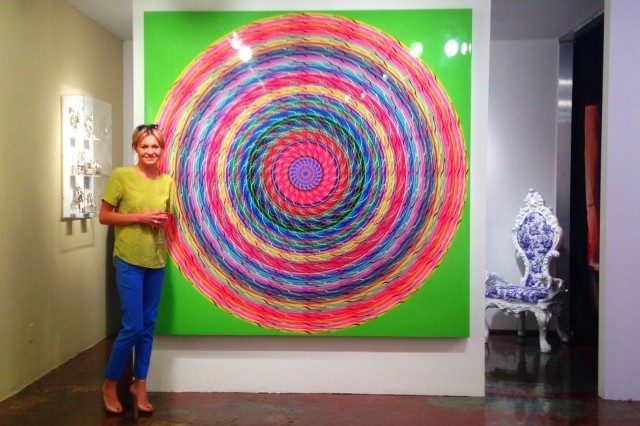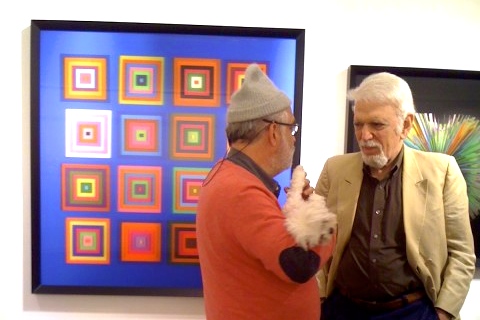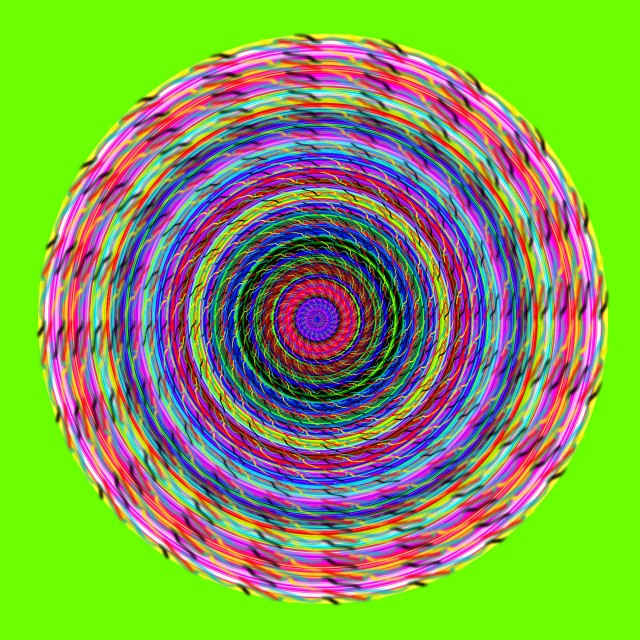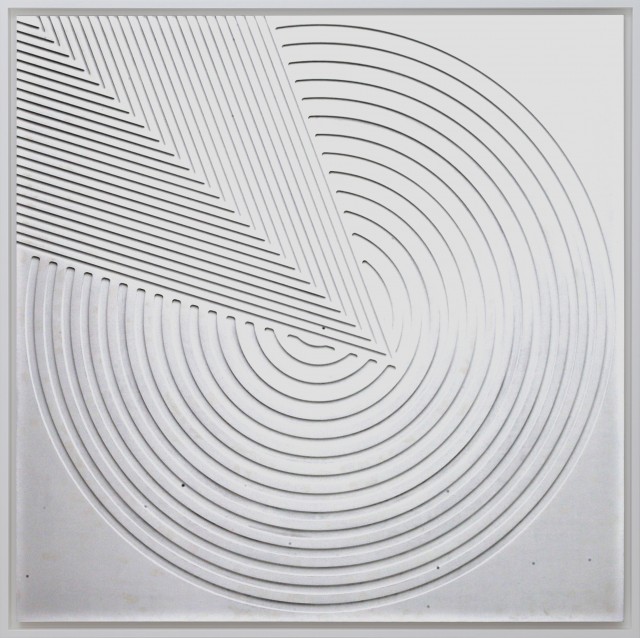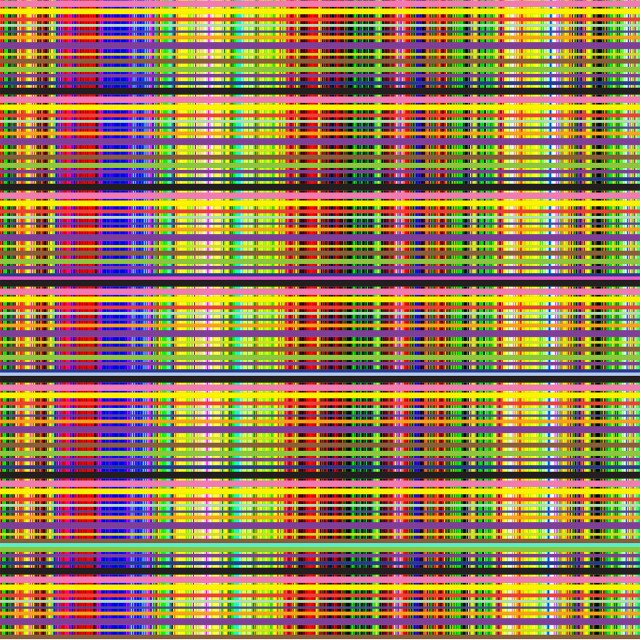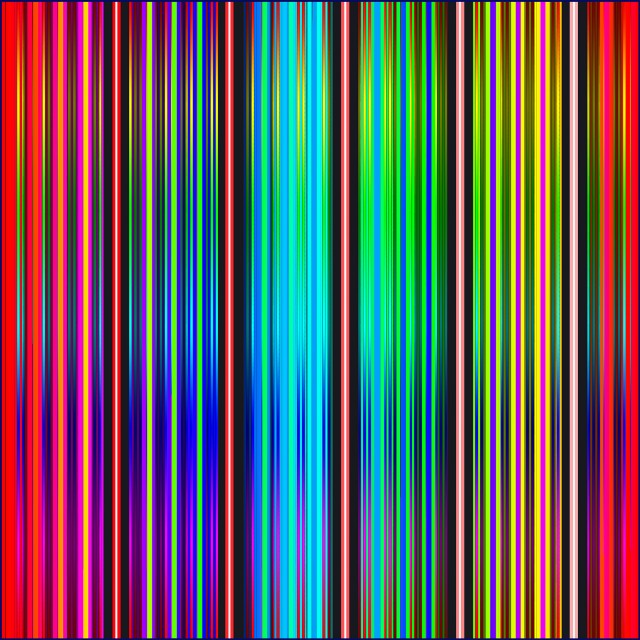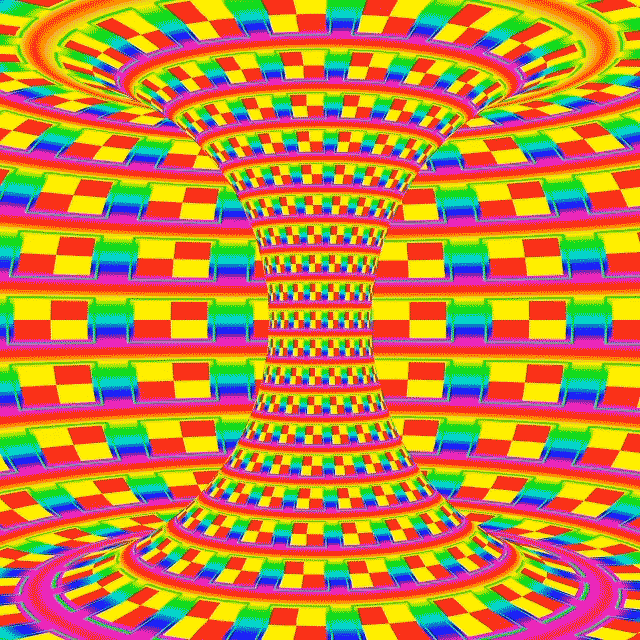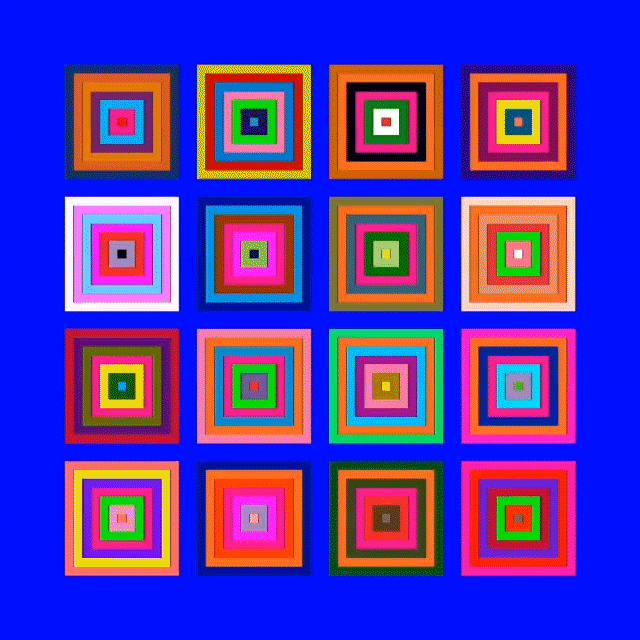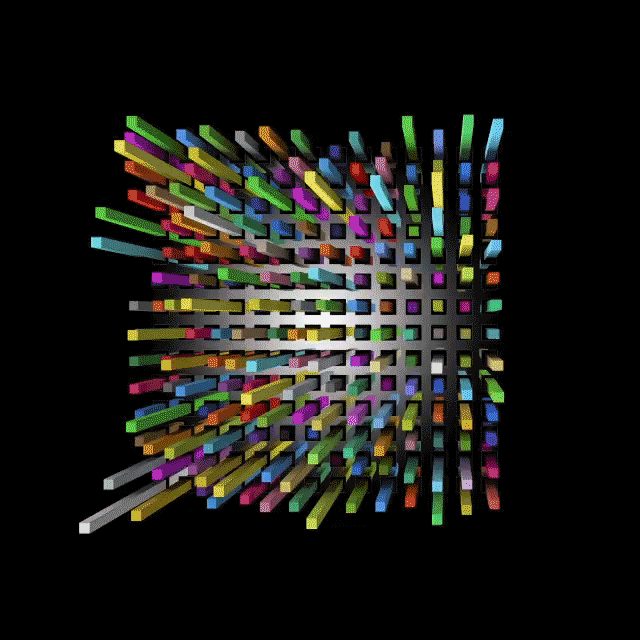November 6, 2013
— April 24, 2025
By Oliver Peterson
Ron Agam Breaks Out in Vered Gallery
It’s not often an artist creates work so new it nearly defies explanation and challenges the viewer’s instinct to name, categorize and reference. While Ron Agam is not without his artistic forebears, his paintings are very uniquely his own.
In Breakout, his latest exhibition at Vered Gallery in East Hampton, Agam presents a series of kinetic works that capture space and time, and actual movement, in a way few have created outside of film and video. Each piece uses innovative digital lenticular technology to bring Agam’s abstract and colorful vision to life, literally.
“With my present body of work, I can claim that my shapes, colors and forms are the expression of an artist that lives in the present, creates for the future with a deep respect for the past,” Agam explains, adding, “My work is the result of constant research that uses traditional tools of imagination and creativity in confluence with the most advanced forms of technology.”
For the past year, Agam has spent nearly all his waking moments experimenting with materials and working obsessively in his Long Island City studio. The result is a breathtaking collection of paintings that borrows some of its visual magic from the world of advertising and applies it to art.
Because of a near fanatical dedication to his craft, Agam appears as a seasoned studio artist, but he only began painting three short years ago. Before then, Agam worked solely behind a camera and had no intention of ever picking up a brush.
Then everything changed.
What Agam calls the “extreme mid-life crisis” that led him to become a painter happened somewhat by surprise. He had spent years working as a successful photographer, but something led him to embrace a different path.
After two months working on one of the biggest and most lucrative jobs of his career—a photo book for luxury group LVMH—Agam abandoned the project—to the shock and dismay of those close to him.
“Everybody criticized me and I went into a deep depression,” Agam explains, describing how he retreated to his studio and stayed there for seven long months, until he was reborn as the artist he is today. “I saw a crayon [in the studio] and I started to draw,” Agam says, recalling his very first artistic endeavors since childhood.
But after those seven months of hard work and soul searching, everything became clear. “I came out of a violent shot in my life that liberated a part of me I didn’t know I had,” Agam says. “I had lost my compass.”
Now, perhaps making up for lost time, the 55-year-old artist has created a huge body of work in an array of sizes and media, including several quite monumental works.
The painting, from a series that predates Agam’s lenticular kinetic works, demonstrates the artist’s eye for color and aesthetics, and how his love affair with unique materials can produce stunning results. “I’m always investigating and researching technology to use in my art,” Agam says. And in this case the finished canvas becomes something of a fetish object, with the luster and sheen of a new car, or perhaps the sensual smoothness of absolutely pristine human skin.
It could be that Agam’s revolutionary approach and love of pushing boundaries is in his DNA. The son of Israeli artist Yaacov Agam, young Ron spent much of his childhood in his father’s Paris studio, just as the older artist was making great strides in kinetic and optical art.
Ron was 7 years old when Yaacov made his most famous painting, “Double Metamorphosis III,” in 1965. The piece uses Yaacov Agam’s well-known polymorphic style and is in the permanent collection of the Museum of
Modern Art in New York. The lenticular and polymorphic paintings change and move, depending on the angle from which they are viewed—much like certain billboards, animated baseball cards or old Cracker Jack prizes. But placing these things next to Agam’s images would be like “comparing comic books to a Roy Lichtenstein,” he says.
